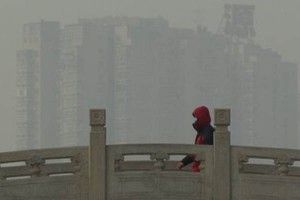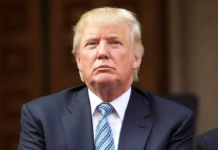Last weekend’s air pollution levels in Beijing were 40 times WHO safety limits
chinaworker.info reporters
“I love our city, but I refuse to be a human vacuum cleaner!” This was one of thousands of comments from Beijingers via social media last weekend as air pollution in northern China broke all previous records. Not only the capital, but also another 30 Chinese cities suffered unprecedented levels of toxic smog.
Air pollution shot a long way past the levels considered hazardous by the World Health Organization (WHO). Thick smog led to the cancellation of flights, closure of highways, and forced authorities to suspend work at dozens of factories and construction sites.
40 times WHO limit
On Saturday 12 January, authorities in Beijing said readings for PM2.5 (dust and debris particles so small they can penetrate the lungs deeply causing illness and death) hit 993 micrograms per cubic metre, which is almost 40 times the WHO’s safe limit. One environmental expert reported that the closest the US has come to such levels is during forest fires, and the levels recorded in Beijing even exceeded that.
The Chinese government’s own readings, criticised by environmental groups for not being comprehensive enough, showed pollution to be ‘hazardous’ in 33 cities across northern and eastern China, affecting over 100 million people.
“The air pollution is unprecedented. This is the first time in China’s history we have seen it this bad,’’ commented Zhao Zhangyuan of the Chinese Research Academy of Environmental Sciences.
So bad was the air quality that a blaze that destroyed a furniture factory in Zhejiang province raged for three hours on 14 January before anyone called the fire department. It was hard for residents to tell the smoke from the smog, reported Xinhua.

Coal burning
The current winter is the coldest for 28 years. This has been cited as one of the causes of the crisis, with more coal being burned to power central heating systems. But even the regime admits that increasing numbers of cars, as well as factory and construction industry pollution are major factors. China is the “biggest construction site in the world” in the words of the Global Times, a regime mouthpiece. Much of the official media carried critical reports of the pollution, as a means to demonstrate their ‘independence’. The Global Times called on the government to “publish truthful environmental data to the public”.
Vice premier Li Keqiang said, “Pollution is not a problem that emerged only a few days ago – it’s a long-term issue, and fixing it will take a long time. But we need to do something about it,” including changes in industrial production and consumption patterns. Such official comments are typically short on actual solutions or action.
In order to produce electricity China burns more coal than the US, Europe and Japan combined. There is an urgent need to develop environmentally safe alternatives like wind and solar power. China now leads the world in the production of solar voltaic cells and wind turbines, but around one-third of the capacity at its wind farms is wasted as the electricity grid lacks the technology to absorb it. The solar industry is mainly geared to export and is suffering a huge crisis of slumping prices and overproduction due to the crazy ups and downs of the capitalist market.
The speculative nature of capitalism is shown by the boom this week in the shares of companies that make face masks. Shares of Shanghai Dragon, a leading face mask producer, surged by the 10 per cent daily limit for two days in a row. Likewise shares in pollution control equipment maker Fujian Longking climbed 9.64 per cent earlier in the week. Rather than channeling resources into solving the crisis, the finance markets try to profit from it.
Surge in car usage
Car usage is another major cause of air pollution in cities like Beijing, where the number of cars has doubled to 5.2 million today from 2.6 million in 2005. In the whole country the number of cars rose from 5 million in 2001 to 100m in 2011, with projections of 200m cars in the year 2020.
The Chinese regime has consciously fostered car sales and increased car production as a ‘pillar industry’ attracting foreign car companies to invest. From an ecological standpoint this strategy has been a disaster. Industrial investment and urban planning should instead have focused on public transportation, urban rail and subway systems and other green alternatives. While city governments are now expanding subway construction (four new lines opened in Beijing recently) this still lags far behind the explosion of car usage and congested road traffic.
As even the regime-controlled China Daily spelt out, “The air quality in big cities could have been better had more attention been paid to the density of the high rises, had more trees been planted in proportion to the number of residential areas, and had the number of cars been strictly controlled.”
Air pollution a major killer
Air pollution now ranks for the first time among the world’s top ten killer diseases. In 2010, more than 2.1m people in Asia died prematurely from air pollution, around half of these in China and East Asia. This is mostly from the tiny particles of diesel soot and gasses emitted from cars and trucks, according to a study published in The Lancet magazine in December 2012.
China’s rapid urbanisation programme has been implemented with little thought to the human and environmental costs, but with huge profits reaped by property developers and corrupt officials at all levels of government. Full democratic control and planning are needed to solve the pollution nightmare, which is not possible without public ownership of the construction industry, transport, and other major companies and a dramaric reorientation of the economy away from fossil fuels into renewable energy. The latest pollution shock shows that genuine socialism and democratic control are a matter of life and death.



